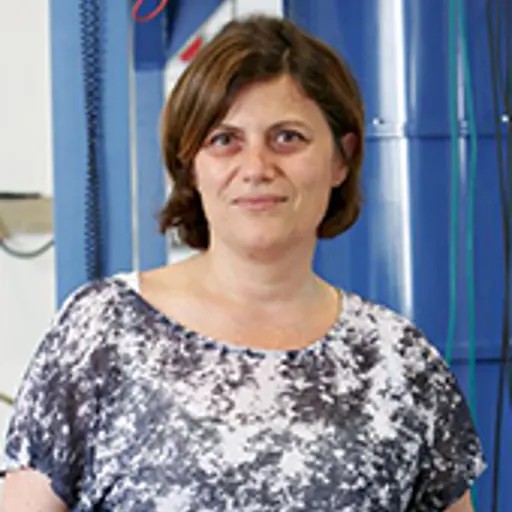Course syllabus adopted 2024-01-31 by Head of Programme (or corresponding).
Overview
- Swedish nameSupraledande elektronik - grundläggande fysik och tillämpningar
- CodeMCC015
- Credits7.5 Credits
- OwnerMPNAT
- Education cycleSecond-cycle
- Main field of studyEngineering Physics
- DepartmentMICROTECHNOLOGY AND NANOSCIENCE
- GradingTH - Pass with distinction (5), Pass with credit (4), Pass (3), Fail
Course round 1
- Teaching language English
- Application code 18122
- Maximum participants20 (at least 10% of the seats are reserved for exchange students)
- Block schedule
- Open for exchange studentsYes
Credit distribution
Module | Sp1 | Sp2 | Sp3 | Sp4 | Summer | Not Sp | Examination dates |
|---|---|---|---|---|---|---|---|
| 0106 Examination 7.5 c Grading: TH | 7.5 c |
|
In programmes
- MPNAT - NANOTECHNOLOGY, MSC PROGR, Year 1 (compulsory elective)
- MPPHS - PHYSICS, MSC PROGR, Year 1 (compulsory elective)
Examiner
 Floriana Lombardi
Floriana Lombardi- Full Professor, Quantum Device Physics, Microtechnology and Nanoscience
Eligibility
General entry requirements for Master's level (second cycle)Applicants enrolled in a programme at Chalmers where the course is included in the study programme are exempted from fulfilling the requirements above.
Specific entry requirements
English 6 (or by other approved means with the equivalent proficiency level)Applicants enrolled in a programme at Chalmers where the course is included in the study programme are exempted from fulfilling the requirements above.
Course specific prerequisites
Basic classical physics and basic quantum physics.
Aim
Superconductivity is a fascinating phenomenon that allows us to observe quantum mechanical effects at the macroscopic scale. A tremendous importance of superconductivity for fundamental science can be seen from the fact that there are at least 12 Nobel laureates in physics, who obtained the price for research related to superconductivity. Besides being of tremendous interest in themselves and vehicles for development key concepts and methods in theoretical physics, superconductors have found important applications in modern society. Those range from high power applications and strong superconducting magnets used in medicine, diagnostics and particle accelerators; to most sensitive quantum devices capable of measuring about a trillionth part of the Earths magnetic field and a millionth part of the electron charge.
Learning outcomes (after completion of the course the student should be able to)
- Describe basic concepts of superconductivity underlying its use in devices and circuits
- Describe and model behavior of Josephson junctions in magnetic field
- Simulate the current-voltage characteristics of Josephson junctions using the RSJ model
- Describe basic principles of Superconducting Quantum Interference Devices (SQUIDs)
- Perform measurements of magnetic fields using SQUIDs
- Analyze the high-frequency properties of superconducting elements
- Account for basic concepts of superconducting qubits and noise sources
Content
- Introduction - Overview of applications of superconductors- Basic properties of superconductors: London equations, linear electrodynamics of superconductors and microwave properties
- Tunneling effect in superconductors
- DC and AC Josephson effect
- RCSJ model of Josephson junctions
- Vortex dynamics in long Josephson junctions
- Superconducting Quantum Interference Devices (SQUIDs)
- Single electron transistors
- Superconducting microwave components
- Superconducting mixers, detectors and bolometers
- Mesoscopic superconducting devices
Organisation
Lectures, Home assignments, Laborations and reports.Literature
Van Duzer: Superconductive Devices and Circuitry, and lectures notes.
Examination including compulsory elements
Home assignments, lab reports and a written examination. The home assignments and lab reports give extra points to the total grade, maximum 20%.Grade levels: the grade 3: 30% correct answers are required, for grade 4: 60% are required, and for grade 5: 80% correct answers are required.
The course examiner may assess individual students in other ways than what is stated above if there are special reasons for doing so, for example if a student has a decision from Chalmers about disability study support.